So thanks to this answer from Mr. Jazz, I have been able to make all objects in one Reality Composer scene, draggable.
Before making them draggable, I had added behaviors to two of the model entities. It worked perfectly: when I opened the app, the scene waa visible and when I clicked on the blue rectangle, it disappeared; when I clicked on the green button, the button moved up and down. The code below worked for the scene where the model entities have NOT been grouped.
let cubesBlueAnchor = try! Experience.loadCubesBlue()
self.arView.scene.anchors.append(cubesBlueAnchor)
cubesBlueAnchor.actions.behavior.onAction = handleTapOnEntity(_:)
See below the screenshot of the Reality Composer behavior screen, I have used the same behaviors for both scenes.
However, once they are grouped in realitykit , their behavior is no longer accessible. I am thinking this is something I need Combine for, but I am not sure. Perhaps there is a simpler solution.
I have copied the scene with the same exact behaviors where the blueCubes is the scene where the haven't been grouped/can't be dragged but the behaviors work.
In the cubesScene, the objects are draggable and scalable, but their behaviors can't be accessed. This is the code that is working.
let cubesAnchor = try! Experience.loadCubes()
arView.scene.anchors.append(cubesAnchor)
print (cubesAnchor)
let redModel = cubesAnchor.children[0].children[0]
let group = ModelEntity() as ModelEntity & HasCollision
group.addChild(redModel)
group.generateCollisionShapes(recursive: false)
self.arView.installGestures(.all, for: group)
let shape = ShapeResource.generateBox(width: 1, height: 1, depth: 1)
let collision = CollisionComponent(shapes: [shape],
mode: .trigger,
filter: .sensor)
group.components.set(collision)
let anchor = AnchorEntity()
anchor.addChild(group)
anchor.scale = [5,5,5]
arView.scene.anchors.append(anchor)
See a screenshot of the phone's screen, showing both. ( The screen capture shows the blueCubes behavior where the blue rectangle is disappearing.
I want to be able to do both - have objects grouped under one entity where they can be dragged AND have the behavior for each model entity fired when I click on each one of them, on the same scene.
But I don't know how to go about it. Maybe removing the collisions when the object is not being dragged?
See the full code below
import UIKit
import RealityKit
class ViewController: UIViewController {
@IBOutlet var arView: ARView!
override func viewDidLoad() {
super.viewDidLoad()
//self.arView.debugOptions = .showPhysics
let cubesAnchor = try! Experience.loadCubes()
arView.scene.anchors.append(cubesAnchor)
print (cubesAnchor)
let redModel = cubesAnchor.children[0].children[0]
let group = ModelEntity() as ModelEntity & HasCollision
group.addChild(redModel)
group.generateCollisionShapes(recursive: false)
self.arView.installGestures(.all, for: group)
let shape = ShapeResource.generateBox(width: 1, height: 1, depth: 1)
let collision = CollisionComponent(shapes: [shape],
mode: .trigger,
filter: .sensor)
group.components.set(collision)
let anchor = AnchorEntity()
anchor.addChild(group)
anchor.scale = [5,5,5]
arView.scene.anchors.append(anchor)
DispatchQueue.main.asyncAfter(deadline: .now() + 2.0){
//self.arView.scene.anchors.removeAll()
let cubesBlueAnchor = try! Experience.loadCubesBlue()
self.arView.scene.anchors.append(cubesBlueAnchor)
cubesBlueAnchor.actions.behavior.onAction = handleTapOnEntity(_:)
}
func handleTapOnEntity(_ entity: Entity?){
guard let entity = entity else { return }
}
}
}


